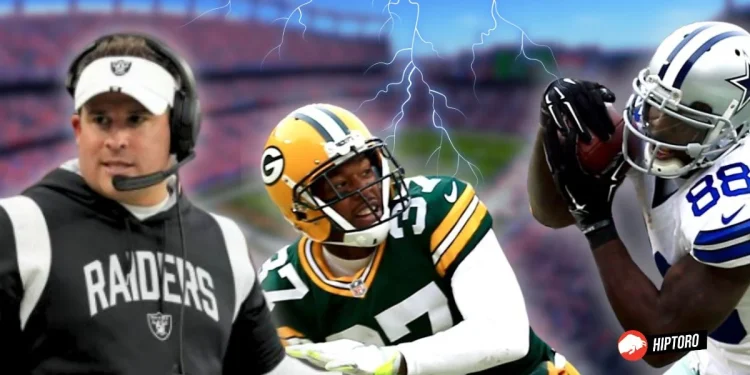The National Football League (NFL) has a long history filled with unforgettable moments, thrilling victories, and heartbreaking defeats. Yet, some of the most talked-about instances are not just spectacular touchdowns or nail-biting finishes; they are also the plays shrouded in controversy. These moments have sparked debates among fans, players, and officials alike, leaving an indelible mark on the sport’s history.
Controversial plays often involve disputes over the rules, officiating errors, or unexpected play outcomes that can turn the tide of a game or even a season. In this article, we explore the top 10 most controversial plays in the history of the NFL, delving into each scenario with a detailed narrative that examines the context, the controversy, the immediate aftermath, and the long-term implications on the game.
As we analyze these memorable plays, we aim to provide a comprehensive look at how they unfolded, the rules and refereeing decisions involved, and why they remain topics of heated discussion to this day. Whether you’re a seasoned NFL fan or new to the sport, these controversial moments offer a fascinating glimpse into the complexities and passions that make professional football so engaging.
Here are the Top 10 Most Controversial NFL Plays
1. The Tuck Rule Game (2002 AFC Divisional Playoff Game)
The “Tuck Rule” Game remains one of the most infamous moments in NFL history. It occurred during the 2001-2002 AFC Divisional Playoff game between the New England Patriots and the Oakland Raiders. The controversy centered around a play involving Patriots quarterback Tom Brady. Late in the game, with snow heavily falling, Brady dropped back to pass and appeared to fumble the ball after being hit by Raiders’ cornerback Charles Woodson.
The Raiders recovered the ball, seemingly sealing the game. However, officials reviewed the play and determined that Brady had been attempting to tuck the ball back into his body after initially trying to throw a pass, which under the rules at the time, was considered an incomplete pass and not a fumble.

The decision to invoke the tuck rule, which many fans and analysts were unaware of before this game, dramatically altered the outcome. The Patriots retained possession, eventually tying the game and winning in overtime, paving their way to a Super Bowl victory. This play not only helped kickstart the Patriots’ dynasty but also led to the eventual repeal of the tuck rule in 2013, as it was widely criticized for being counterintuitive.
The overturning of the call allowed the Patriots to maintain possession, leading to a game-tying field goal and an eventual win in overtime. This game is particularly significant as it marked the beginning of the Patriots’ dynasty under Brady and Bill Belichick. The controversy fueled years of debate over the fairness and clarity of the NFL’s rulebook, culminating in the rule’s repeal in 2013. The incident highlights not only the immediate impact on the teams involved but also the lasting influence on NFL rule-making processes.
2. The Immaculate Reception (1972 AFC Divisional Playoff Game)
One of the most legendary plays in NFL history is the “Immaculate Reception” that occurred during the 1972 AFC Divisional Playoff Game between the Pittsburgh Steelers and the Oakland Raiders. With the Steelers trailing 7-6 and facing fourth-and-ten on their 40-yard line, only 22 seconds remaining on the clock, Steelers quarterback Terry Bradshaw threw a desperate pass. The ball deflected either off the hands of Raiders’ safety Jack Tatum or Steelers’ running back John Fuqua. As the ball headed towards the ground, Steelers fullback Franco Harris scooped it up without it ever touching the ground and ran it in for a touchdown. The play gave the Steelers a dramatic 13-7 victory.
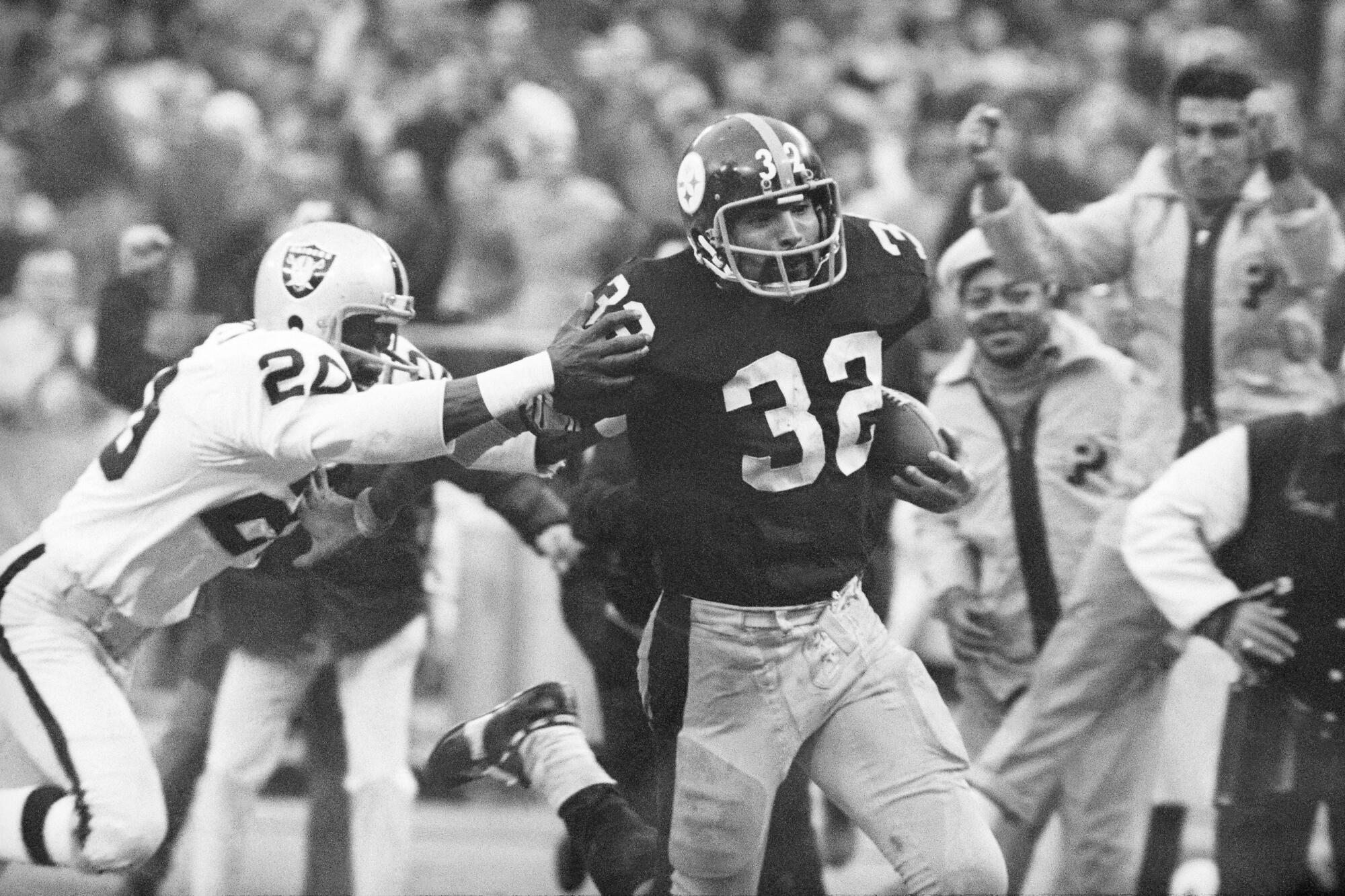
The controversy lies in whether the ball touched only Fuqua or both Tatum and Fuqua before Harris caught it. NFL rules at the time prohibited a pass from bouncing from one offensive player to another unless it was touched by a defensive player in between. The play was not reviewed as instant replay technology was not available at the time. The “Immaculate Reception” is revered by Steelers fans and remains a bitter memory for Raiders supporters, illustrating the fine line between agony and ecstasy in sports.
This play has been analyzed and debated extensively, particularly regarding who the ball touched last before Harris caught it. The controversy stems from the NFL rule that prohibited a pass from being caught by another offensive player without a defensive player touching it in between. Over the years, this play has been dissected by new angles and technologies, yet it remains shrouded in mystery and controversy, symbolizing the unpredictability and drama of football.
3. The Fail Mary (2012 Packers vs. Seahawks Game)
The “Fail Mary” play occurred during a game between the Green Bay Packers and the Seattle Seahawks in 2012. The game was notable for being officiated by replacement referees due to a labor dispute involving the regular officials. On the final play of the game, Seahawks quarterback Russell Wilson threw a Hail Mary pass into the Packers’ end zone. Both Seahawks wide receiver Golden Tate and Packers safety M.D. Jennings got their hands on the ball. Although it appeared Jennings had secured the ball for an interception, Tate wrestled with him, and both players went to the ground together holding the ball.
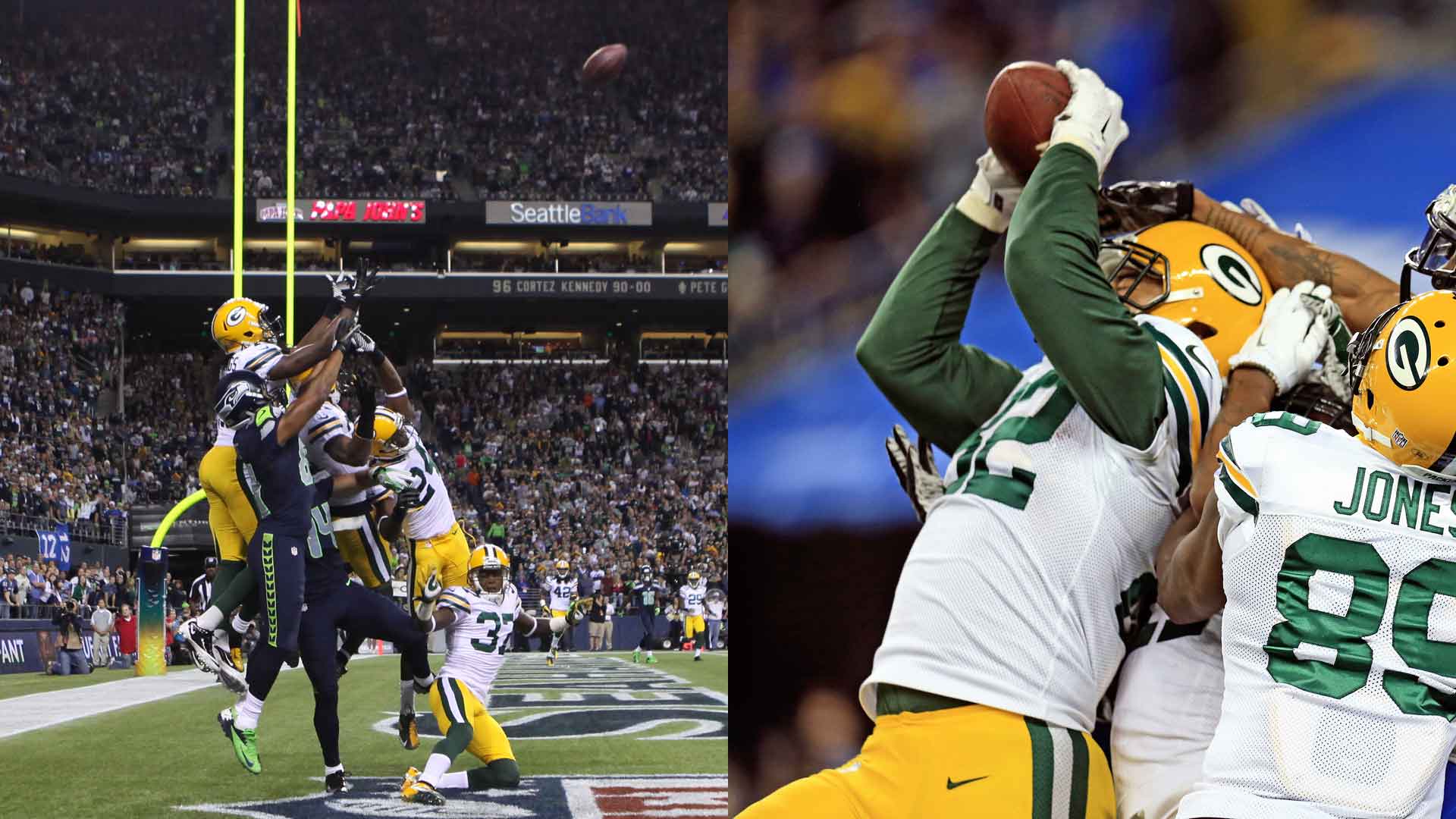
The replacement officials made conflicting calls on the field, and after a confusing review process, the play was ruled a touchdown for Seattle, giving them a 14-12 victory. This controversial decision led to widespread criticism of the replacement referees’ abilities and hastened the end of the referee lockout. The “Fail Mary” remains a key example of how critical professional officiating is in the NFL.
The outcry following this game was immense and became a pivotal moment in the labor dispute between the NFL and its regular referees, leading to a resolution shortly thereafter. The play not only affected the outcome of the game but also underscored the importance of experienced officiating in the NFL, contributing to changes in how officials are trained and supported.
4. The Music City Miracle (2000 AFC Wild Card Playoff Game)
The “Music City Miracle” is another controversial play that took place during the 2000 AFC Wild Card Playoff game between the Tennessee Titans and the Buffalo Bills. With only 16 seconds left in the game and the Titans trailing by one point, they executed a kickoff return that involved a lateral pass across the field. Titans fullback Frank Wycheck threw the ball across the field to wide receiver Kevin Dyson, who then ran 75 yards to score a touchdown. The controversy stems from whether Wycheck’s pass was a lateral, which is legal, or a forward pass, which would have been illegal.

Replays appeared to show the pass traveling very close to parallel, though the angle made it difficult to conclusively determine. The officials ruled it a legal lateral, and the play stood as called. The Titans’ win on this dramatic play sent them on a path to the Super Bowl, while the Bills were left to ponder what might have been. This play is often highlighted in discussions about the importance of precise officiating in critical game moments.
The “Music City Miracle” is one of the most meticulously analyzed plays due to its execution and the rule interpretations it involved. The Tennessee Titans’ Lorenzo Neal received the kickoff and handed the ball to Frank Wycheck, who then threw a lateral pass across the field to Kevin Dyson, who ran it back for a game-winning 75-yard touchdown. The controversy hinged on whether Wycheck’s pass was a legal lateral or an illegal forward pass. Replays showed the ball traveling in a nearly parallel trajectory, but the slight forward angle led to debates and extensive review.
This play not only demonstrated the razor-thin margins that can define NFL games but also the technological and procedural limitations in determining the accuracy of on-field calls. It also had a lasting impact on how similar plays are reviewed in future games, emphasizing the need for clear and concise rule interpretations.
5. The Dez Caught It Play (2015 NFC Divisional Playoff Game)
The “Dez Caught It” controversy unfolded during the 2015 NFC Divisional Playoff game between the Dallas Cowboys and the Green Bay Packers. With the Cowboys trailing and facing a crucial 4th and 2 late in the game, Cowboys quarterback Tony Romo threw a deep pass to wide receiver Dez Bryant. Bryant leaped for an incredible catch deep in Packers territory. Initially, it appeared Bryant had made the catch and was down by contact at the 1-yard line. However, upon review, officials ruled that Bryant did not maintain control of the ball throughout the process of going to the ground, invoking the NFL’s then-complex catch rule.
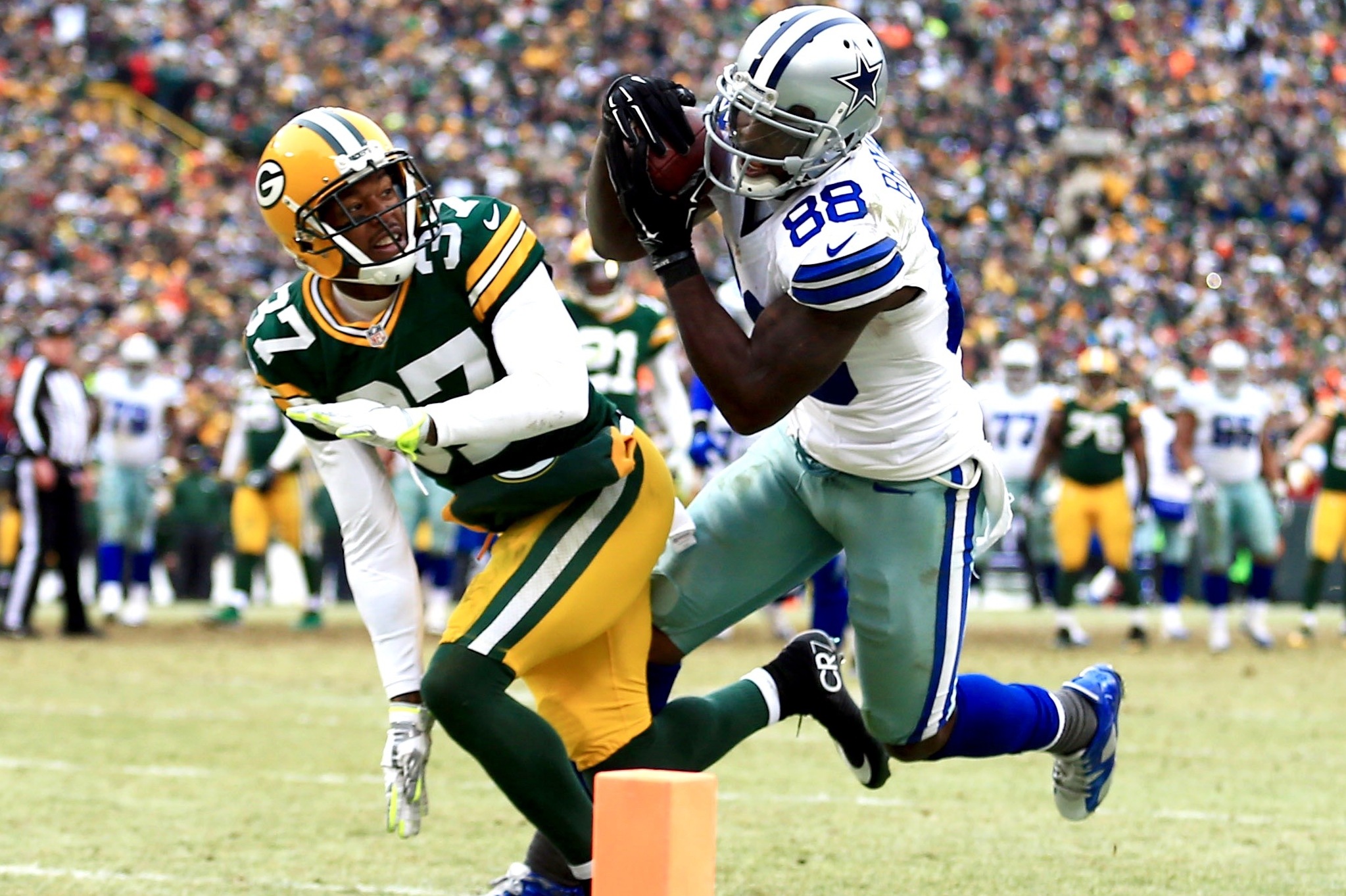
The decision to overturn the catch was met with significant controversy, as many argued that Bryant had made multiple football moves, including reaching for the goal line. The call had a direct impact on the outcome of the game, as the Packers took over on downs and went on to win the game. This incident sparked a wider debate about what constitutes a catch in the NFL, eventually leading to a rule change in 2018 to simplify the catch criteria.
The backlash from this call was immense and contributed to several discussions and eventual changes regarding what constitutes a catch in the NFL. This play not only had immediate repercussions for the Cowboys, potentially costing them a chance at a Super Bowl appearance but also influenced the broader conversation about how the NFL defines and adjudicates receptions, leading to rule simplifications focused on maintaining the spirit of the game while ensuring fair play.
6. The Helmet Catch (Super Bowl XLII)
The “Helmet Catch” is one of the most iconic plays in Super Bowl history, though not without its controversies. During Super Bowl XLII, the New York Giants faced the then-undefeated New England Patriots. With the Giants trailing late in the fourth quarter, quarterback Eli Manning escaped a near sack and launched a desperate pass downfield. Giants wide receiver David Tyree caught the ball by pinning it against his helmet while being closely guarded by Patriots safety Rodney Harrison. Tyree maintained control as he fell to the ground, setting up the Giants’ game-winning touchdown.
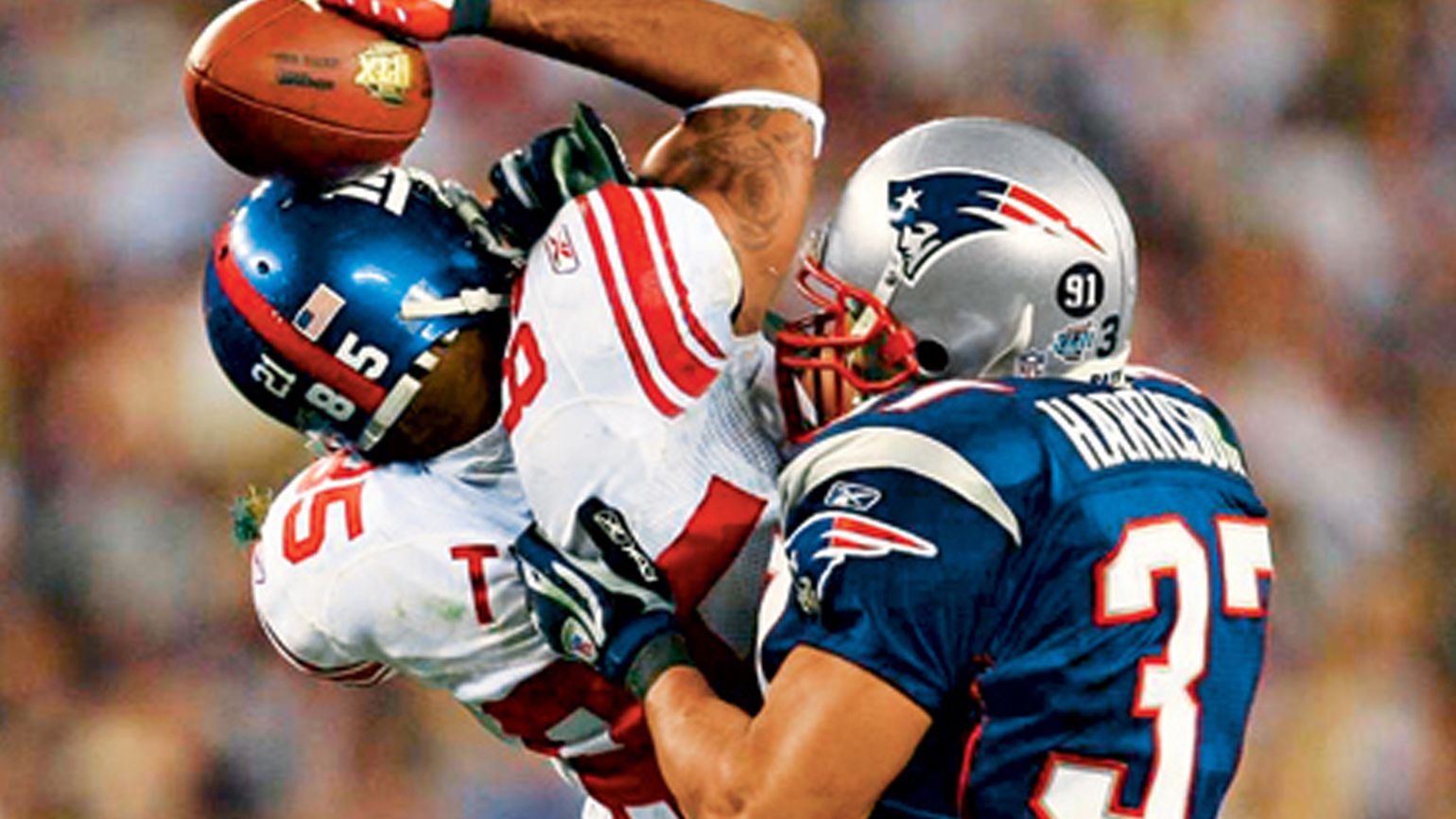
The controversy here stems less from the rules and more from the disbelief and debates over whether Manning was down before throwing the ball and the miraculous nature of the catch itself. This play was a pivotal moment that led to the Giants ending the Patriots’ bid for a perfect season, and it remains a staple of NFL highlight reels.
The controversy here doesn’t stem from a rule infraction but from the sheer improbability and debate over Manning being in the grasp of defenders before throwing the ball. This moment is dissected for its impact on NFL lore as it not only prevented the Patriots from completing a perfect season but also emphasized the unpredictability of football, where a single, miraculous play can define careers and change the fortunes of an entire franchise.
7. The No-Catch Rule Affects Lions (2014 NFC Wild Card Game)
Similar to the Dez Bryant incident, this controversy involved a critical interpretation of the NFL’s catch rule. During the 2014 NFC Wild Card game between the Detroit Lions and the Dallas Cowboys, Lions receiver Calvin Johnson made a catch in the end zone that seemed to secure a touchdown. However, upon review, it was ruled that Johnson did not complete the process of the catch as he went to the ground. The call was particularly contentious because Johnson had possession and made a football move by extending the ball toward the goal line.
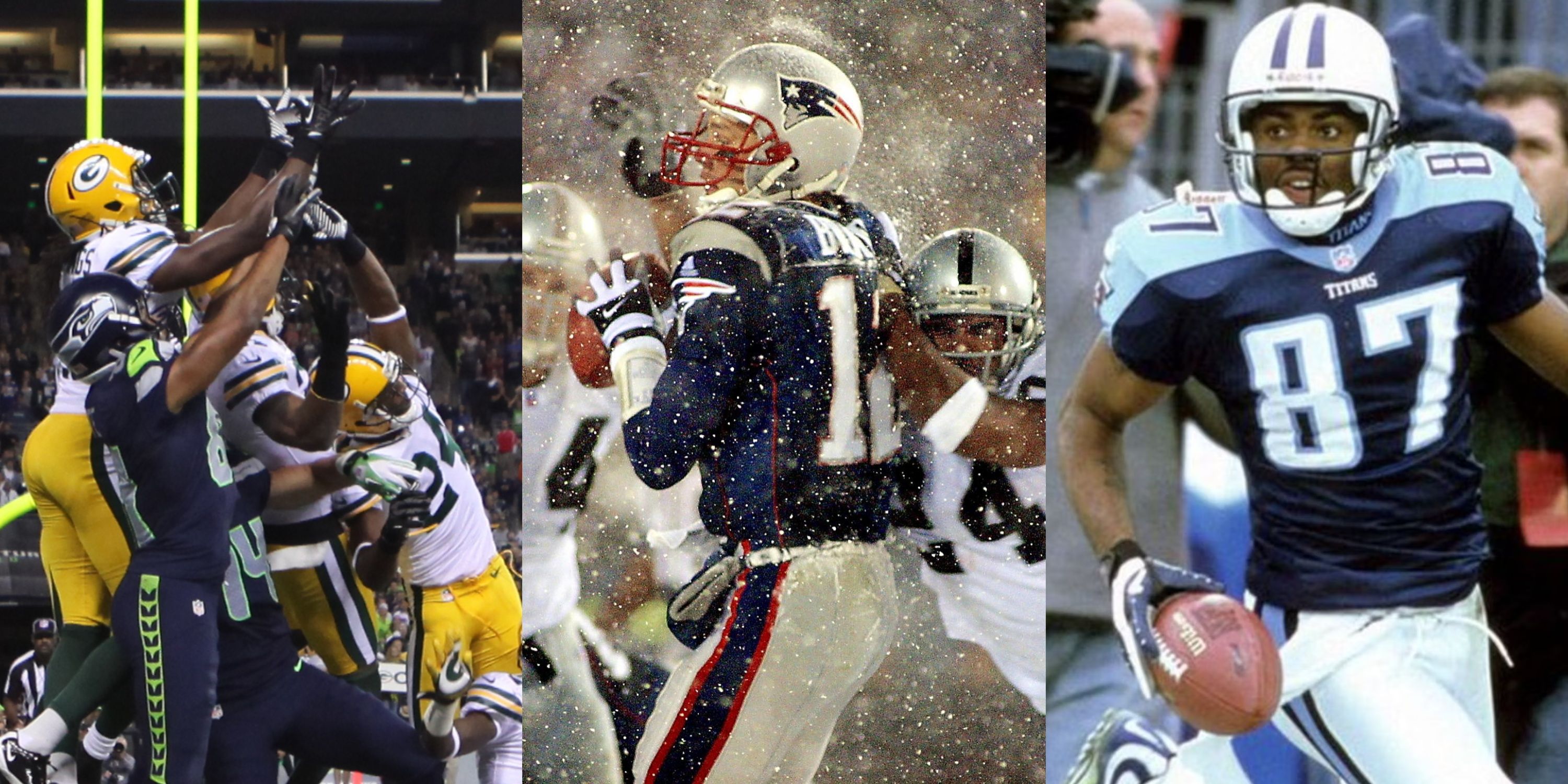
The decision to overturn the touchdown was widely criticized and was another pivotal moment that contributed to the NFL reevaluating and eventually modifying the catch rule. This play not only impacted the game’s outcome but also stirred ongoing debates about the consistency and interpretation of game rules.
Calvin Johnson’s overturned touchdown in the 2014 NFC Wild Card Game against the Dallas Cowboys reignited controversy over the NFL’s catch rule. Johnson appeared to secure a touchdown catch, but as he went to the ground, the ball came loose. Officials ruled that he did not “complete the process” of the catch, applying a rule that many felt was counterintuitive. This decision not only impacted the game’s outcome but also fueled ongoing debates about what constitutes a catch in the NFL.
The “Calvin Johnson Rule” became a focal point for reviewing and ultimately revising the catch rule in the NFL. This play highlighted the challenges of interpreting complex rules during crucial moments, influencing future rulings, and the simplification of the catch rule to better reflect the natural actions of catching a football, thus aiming to reduce confusion for players, officials, and fans alike.
8. The Double Doink (2019 NFC Wild Card Playoff Game)
The “Double Doink” occurred during the 2019 NFC Wild Card Playoff game between the Chicago Bears and the Philadelphia Eagles. Bears kicker Cody Parkey attempted a 43-yard field goal in the closing seconds that would have won the game for Chicago. The kick hit the left upright and then the crossbar in a phenomenon now referred to as the “double doink,” before falling into the end zone without scoring.
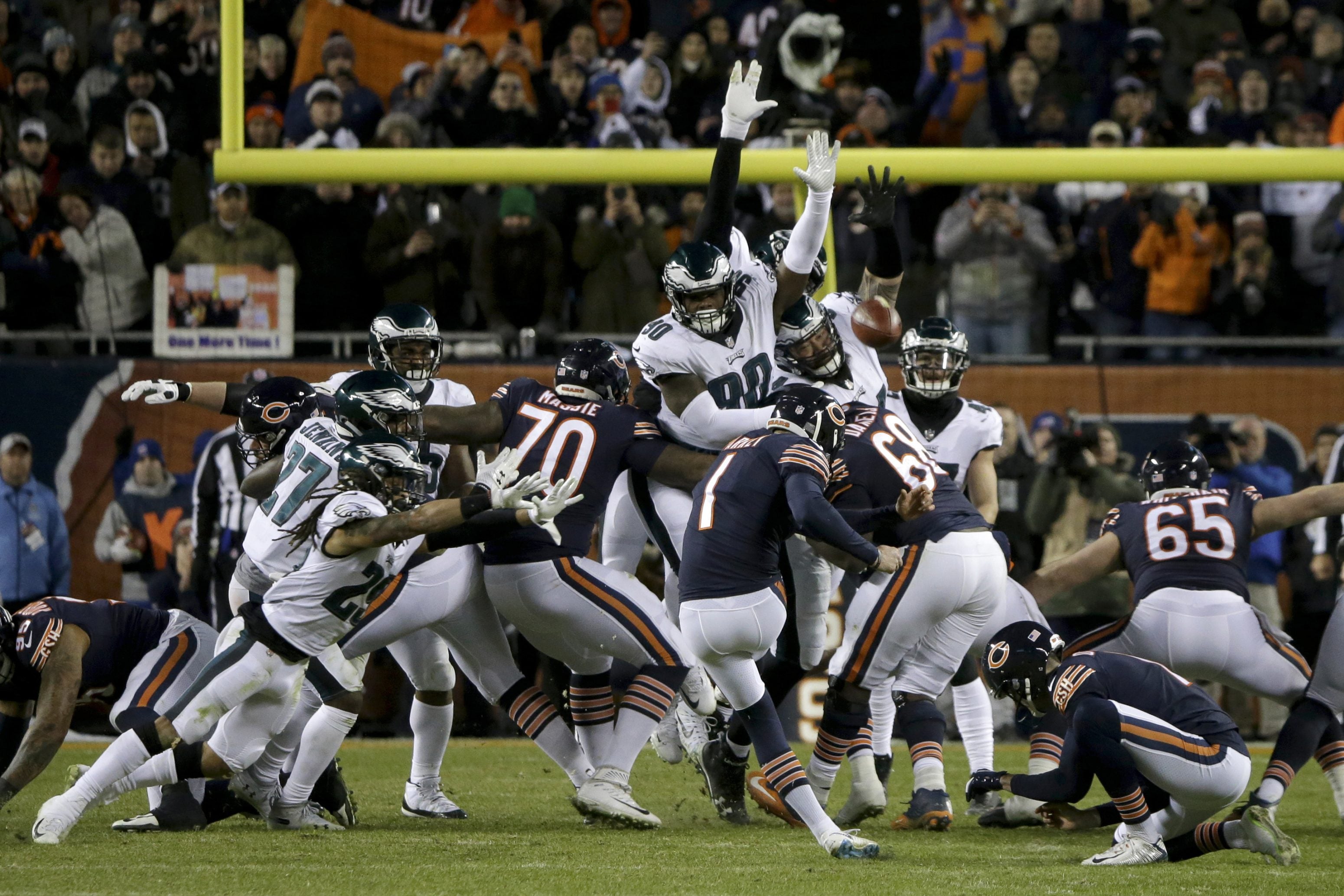
While not controversial in the traditional sense of officiating errors, the play became infamous for its sheer improbability and dramatic impact on the Bears’ season. It also sparked discussions about the psychological pressures on kickers and the unpredictable nature of football.
Cody Parkey’s “Double Doink” miss in the 2019 NFC Wild Card Game is one of the most infamous field goal attempts in NFL history. Attempting a 43-yard field goal that could have won the game for the Chicago Bears against the Philadelphia Eagles, Parkey’s kick hit the left upright and then the crossbar before falling back into the field of play. The miss led to the Bears’ elimination from the playoffs and was a heart-wrenching moment for the team and its fans.
While not controversial in terms of rules, the “Double Doink” is discussed for its psychological impact on players and the role of luck in sports. It also highlights the intense pressure NFL players face, especially kickers, in critical moments. This event led to discussions about the mental aspects of sports performance, particularly how athletes rebound from public and pivotal failures.
9. The Pass Interference No-Call (2019 NFC Championship Game)
Perhaps one of the most blatant controversies in recent NFL history occurred during the 2019 NFC Championship Game between the Los Angeles Rams and the New Orleans Saints. Late in the fourth quarter, with the score tied, Saints quarterback Drew Brees threw a pass to wide receiver Tommylee Lewis. Lewis was interfered with by Rams cornerback Nickell Robey-Coleman, who made helmet-to-helmet contact before the ball arrived without any attempt to play the ball. Incredibly, no flag was thrown for pass interference.

The no-call had a significant impact on the game’s outcome. Had the penalty been called, the Saints would have been in a position to potentially run down the clock and score a game-winning field goal. Instead, the game went into overtime where the Rams won and advanced to the Super Bowl. The backlash from this play was so intense that it led to a temporary rule change allowing pass interference calls and non-calls to be reviewable by replay.
The non-call on obvious pass interference by Nickell Robey-Coleman against the New Orleans Saints’ Tommylee Lewis in the 2019 NFC Championship Game is one of the most blatant officiating errors in recent NFL history. The lack of a call likely changed the outcome of the game, preventing the Saints from securing a position to potentially win the game in regulation. Instead, the game went to overtime, and the Los Angeles Rams eventually won, advancing to the Super Bowl.
The fallout was significant, leading to rule changes that allowed teams to challenge pass interference calls and non-calls for the following season. This incident not only affected the Saints and their fans but also had a lasting impact on NFL officiating policies, stressing the importance of accountability and the potential for technology to aid in game integrity.
10. The Holy Roller (1978 Raiders vs. Chargers Game)
The “Holy Roller” game between the Oakland Raiders and the San Diego Chargers features one of the most controversial plays in NFL history. Late in the game, with the Raiders trailing and facing a seemingly insurmountable situation, Raiders quarterback Ken Stabler fumbled the ball forward as he was being sacked. The ball rolled towards the Chargers’ goal line, with multiple players from both teams unable to secure it. Raiders tight end Dave Casper eventually fell on the ball in the end zone for a touchdown.

The controversy stemmed from the apparent intentionality of the fumble, which looked to some like a deliberate attempt to advance the ball in a situation where a pass was not feasible. This play led to a significant rule change in the NFL, prohibiting players from fumbling forward on purpose in the final two minutes of a half. The rule aimed to prevent teams from exploiting similar tactics to unfairly advance the ball.
The “Holy Roller” play involved a clever but controversial maneuver where Raiders quarterback Ken Stabler, about to be sacked, intentionally fumbled the ball forward. The ball kept moving towards the Chargers’ end zone with various players attempting to recover it until Raiders tight end Dave Casper eventually fell on it for a touchdown. The play was legal at the time but looked so deliberate that it prompted the NFL to change the rules, prohibiting intentional forward fumbles late in the game.
This play is a pivotal example of how creativity in exploiting existing rules can lead to significant rule changes. It illustrates the ongoing cat-and-mouse game between evolving strategies within the sport and the rulebook adjustments intended to maintain fairness and sportsmanship in football.
These top 10 most controversial NFL plays showcase not just moments of high drama and intense competition, but also pivotal turning points that often led to rule changes or intense debates about the nature of the game. Each of these plays reflects the complexity and the high stakes of NFL football, where a single moment can define a game, a season, or even a career. They remind us that in sports, as in life, the line between triumph and defeat can be razor-thin, often decided by the interpretation of rules or the unpredictable bounce of a ball.


